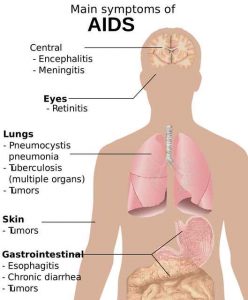Myths About HIV
 Over the last 30 years, there has been much improvement in the detection and treatment of HIV/AIDS. According to a study from 2016 conducted by UNAIDS, a company under the UN committed to protecting people struggling with AIDS, 36.7 million global taxpayers are infected by the said condition. It has been more than 30 years since HIV/AIDS was first detected, and through the years, there has been much improvement in the detection and treatment of the disease. Though most the urban world claims to be knowledgeable about the principles of what HIV and AIDS are the causes, symptoms and avoidance measures there are false allegations which were spread on the condition, causing a collection of myths that circulate within the community.
Over the last 30 years, there has been much improvement in the detection and treatment of HIV/AIDS. According to a study from 2016 conducted by UNAIDS, a company under the UN committed to protecting people struggling with AIDS, 36.7 million global taxpayers are infected by the said condition. It has been more than 30 years since HIV/AIDS was first detected, and through the years, there has been much improvement in the detection and treatment of the disease. Though most the urban world claims to be knowledgeable about the principles of what HIV and AIDS are the causes, symptoms and avoidance measures there are false allegations which were spread on the condition, causing a collection of myths that circulate within the community.
Together with World AIDS Day today, its timely which we more debunk some of the common myths about the disease.
HIV equals AIDS – One common myth is which anyone infected by HIV mechanically has AIDS. This has become the most typical assumption because society finds it difficult into tell the two things aside. It is really a relatively simple concept AIDS is the effect of HIV damaging ones immunity system into the entity of leaving them vulnerable into opportunistic infections and ailments like fevers, mouth sores, lung ailments, yeast infection, and some cancers. In a nutshell, HIV is the contagion, and AIDS is the state that may develop if it’s left untreated.
Suggested Article :- Sexually Transmitted Diseases List
 Those with HIV do not necessarily have AIDS, but people with AIDS definitely have HIV.
Those with HIV do not necessarily have AIDS, but people with AIDS definitely have HIV.
Those with HIV seem very sick – When HIV positive individuals are mentioned, society pictures sickly looking ill patients, a widely believed misconception. This isn’t the case, as more often than not, those who’re HIV positive look just as well as anyone else. Even early signs of AIDS resemble typical diseases, including sore throats, increased temperature of the body and muscle aches.
Touching spreads HIV – Many think which AIDS may easily be spread through contact with somebody who has the condition, for instance, through drinking through the same bottle, sharing utensils, and utilizing the same toilet.
Some even think which touching a diagnosed person will spread the virus into them, making the act of simply shaking their hand seem like a difficult task. It false rumor about the virus has instilled a fear of interaction with HIV positive Individuals within society. Honestly, HIV can’t be spread by touch, saliva or perspiration, and thinking thus diminishes those with the condition.
In many cases, the virus is transmitted sexually, spread through body fluids like semen, vaginal discharge and blood.
HIV means an early death – Another myth we frequently mistake as truth is which being infected with HIV ultimately will lead to an early death for all those diagnosed when they’re young. Yes, having HIV is a risk into your health, but no, it isn’t a death sentence. Compared to 3 decades ago when it was just discovered, we’ve the advantage of the best medical technology and the best drugs readily available into prevent the deterioration of a HIV positive persons health, and so long as they maintain optimal life habits, an average 70 decades of life expectancy can be seized.


